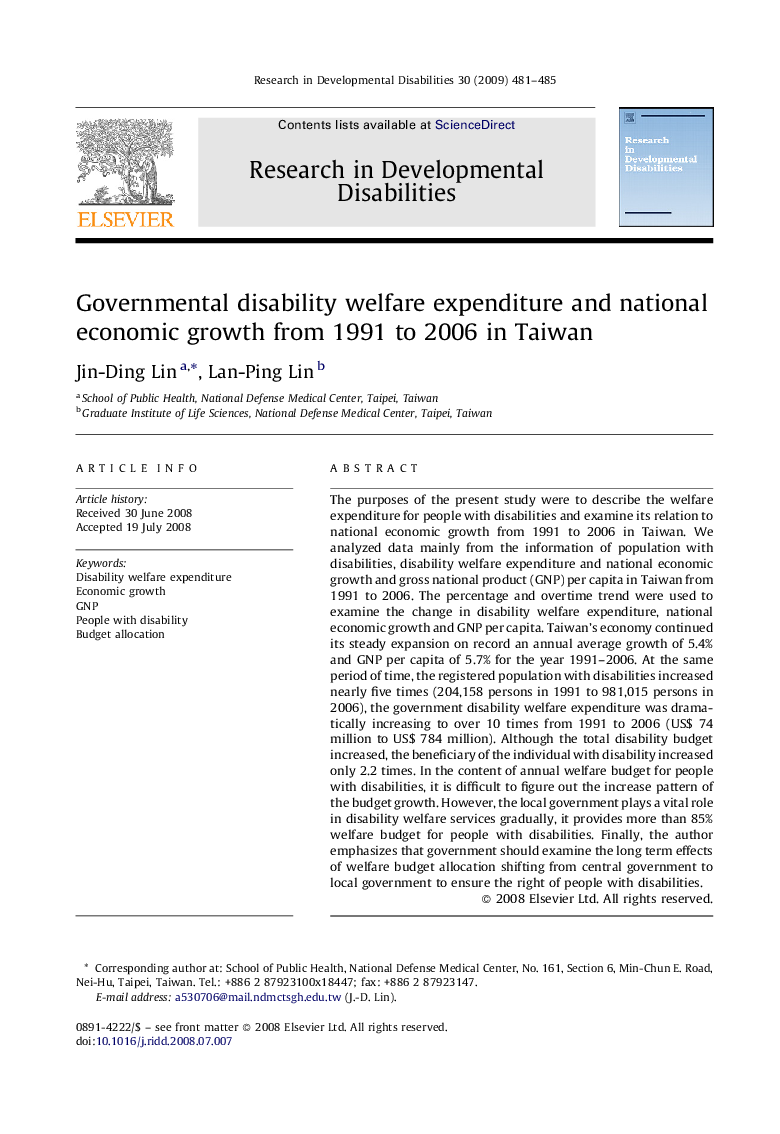| Article ID | Journal | Published Year | Pages | File Type |
|---|---|---|---|---|
| 371363 | Research in Developmental Disabilities | 2009 | 5 Pages |
The purposes of the present study were to describe the welfare expenditure for people with disabilities and examine its relation to national economic growth from 1991 to 2006 in Taiwan. We analyzed data mainly from the information of population with disabilities, disability welfare expenditure and national economic growth and gross national product (GNP) per capita in Taiwan from 1991 to 2006. The percentage and overtime trend were used to examine the change in disability welfare expenditure, national economic growth and GNP per capita. Taiwan's economy continued its steady expansion on record an annual average growth of 5.4% and GNP per capita of 5.7% for the year 1991–2006. At the same period of time, the registered population with disabilities increased nearly five times (204,158 persons in 1991 to 981,015 persons in 2006), the government disability welfare expenditure was dramatically increasing to over 10 times from 1991 to 2006 (US$ 74 million to US$ 784 million). Although the total disability budget increased, the beneficiary of the individual with disability increased only 2.2 times. In the content of annual welfare budget for people with disabilities, it is difficult to figure out the increase pattern of the budget growth. However, the local government plays a vital role in disability welfare services gradually, it provides more than 85% welfare budget for people with disabilities. Finally, the author emphasizes that government should examine the long term effects of welfare budget allocation shifting from central government to local government to ensure the right of people with disabilities.
